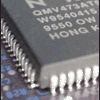-
Posts
251 -
Joined
-
Last visited
Never
About GreekPIC
- Birthday 04/11/1975
Recent Profile Visitors
The recent visitors block is disabled and is not being shown to other users.
GreekPIC's Achievements
Newbie (1/14)
0
Reputation
-
Ebay, DigiKey, Mouser, RS...
-
There's a 7805 5V controller onboard. It can take 8-35V as an input (actually whatever voltage the steppers need) and output 5V for the UCN chips Depending on the software you use, you can use NC or that as the switch being pressed and it will stop. You can spare some parallel port pins by wiring all three limit switches in series. The limit switches are no to be used on purpose like the home switches so you can live with that. If the machine hits a limit, you can visually check which axis it was. Now, that's hard. Google each and every marking, serial number or brandname you see on them and try to find a datasheet. Nikolas
-
I've posted pics on the first pages of this thread. Is your board working ok? Did you work the software settings out? Nikolas
-
Like I said, in my opinion EMC2. TurboCNC is easy to setup and runs on old PCs but is rather limited in capabilities. I didn't get into much detail with Mach, but EMC2 seems very impressive. It even has ladder programming (language used in PLCs). Small inkjet printer motors. This is a small, proof of concept machine. I've bought bigger, used motors for a bigger mill or a retrofit.
-
TurboCNC. I've tried also Mach2 and CNCplayer. I now downloaded EMC2 and seems like the way to go.
-
I'm not familiar with KCam, but you might want to select "Pin setup", that's how it's done to all other programs I've seen. Nikolas
-
You got it!
-
Nowhere. It's created on the board. Look at the PCB. It's my revised version but the basics are the same: The 12v is connected to the two large pads on the right. The three pads next to them to the left are for the 7805. The lowest (square) is 12v input, the middle is GND and the topmost is the 5v output, which feeds the ICs The large trace going up and then left, carries the 12v to the motors. Nikolas
-
It doesn't. It has an on-board 5v power supply circuit with the 7805 regulator. It takes a 8-24v input. You connect 12v to the board. It goes straight to the motors. It also goes through the 7805 to provide 5v for the chips. Nikolas
-
MP, his main problem is that he has a bipolar motor while the board only supports unipolar ones (5,6,8 wire motrors). There is a circuit that can be added to the board to drive bipolar motors (I have it around somewhere) but it needs 12 power transistors per motor. It's much better to just look for another motor. Nikolas
-
Thanks for the effort That's it, only mine says DJ390006. It must be serial, having only 10 pins. Any way to reverse engineer it?
-
I'm looking for a datasheet or just the pinout of a C60 screen (model LM15SGFNZ07). It might be made by Sharp but I can't confirm that. Thanks
-
On the project page you'll find the schematic, pcb layout and parts overlay in *.ps format. Here is my modification, I changed it a bit to suit my needs. Nikolas
-
Audioguru, heatsinks are actually extrusions, not casts. I've seen a cast heatsink from an old Russian (or should I say Soviet) appliance and it was UGLY! Nikolas
-
Just kidding. On the serious side, I think that someone should have the Greek fonts installed to be able to read what you wrote. Otherwise they would come up looking like skandinavian. The unicode fonts where supposed to solve this problem but very few font creators bother to inlude all the available languages in their creations. Nikolas


